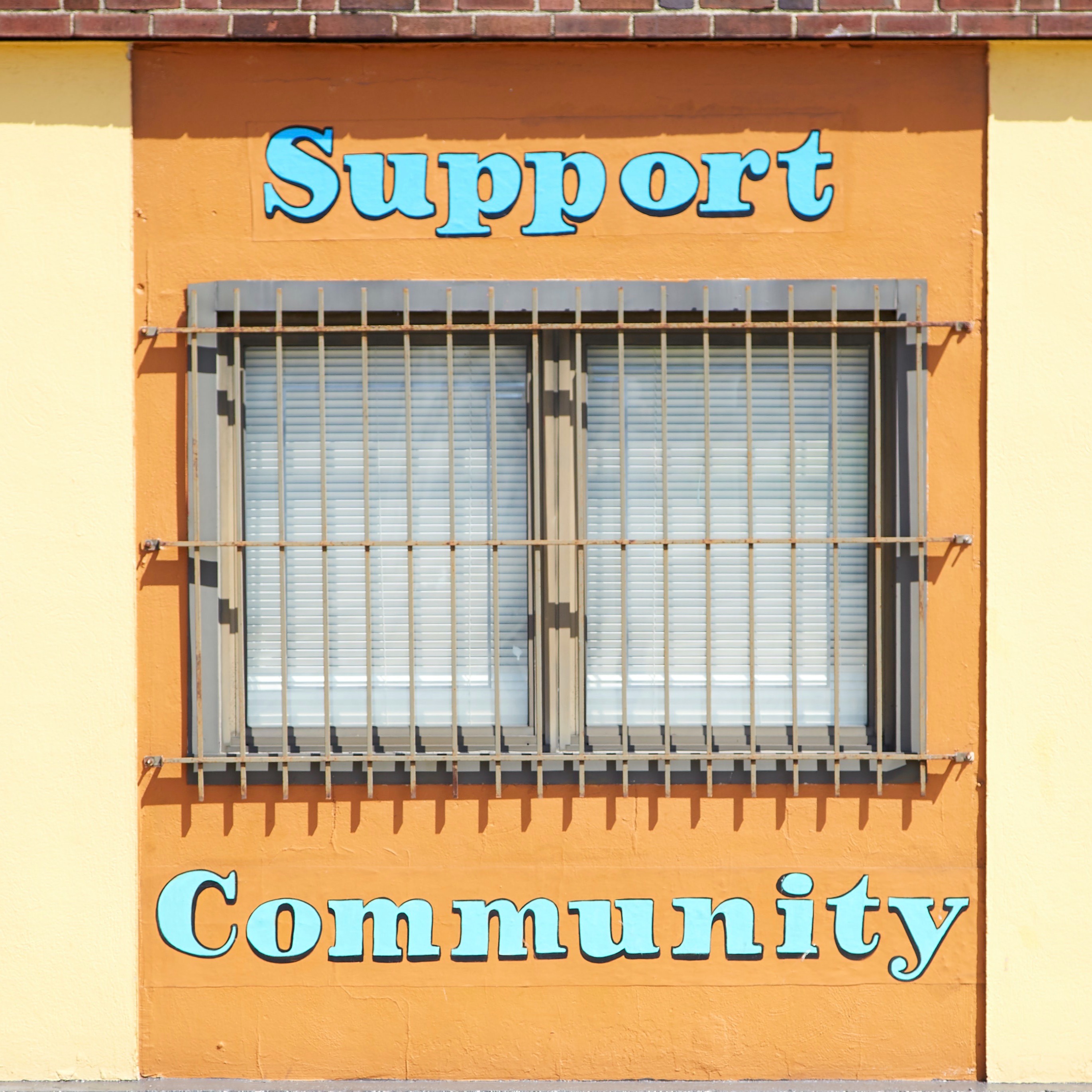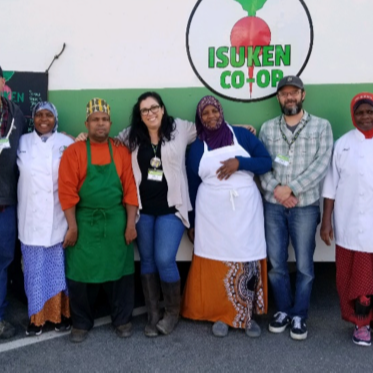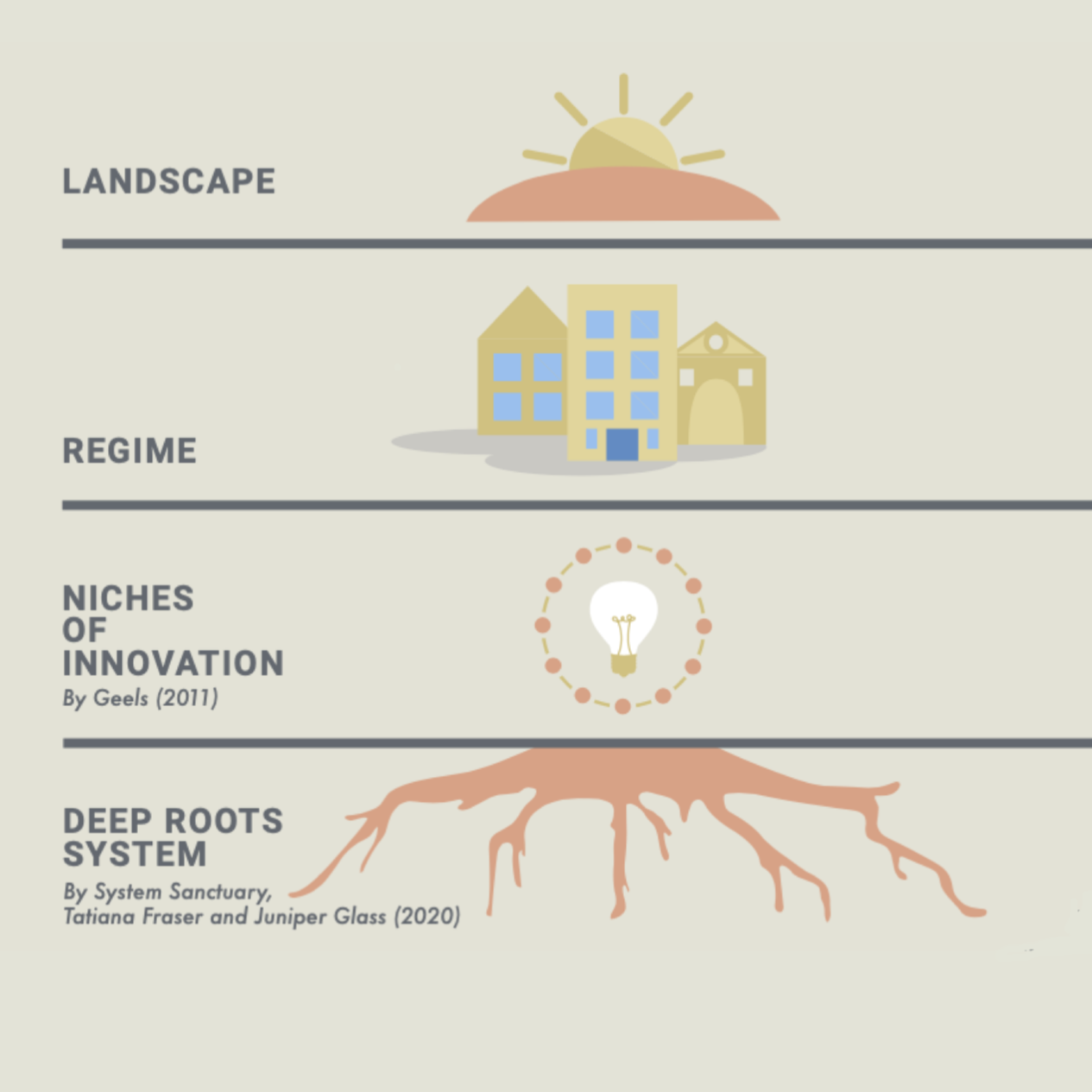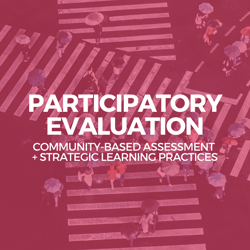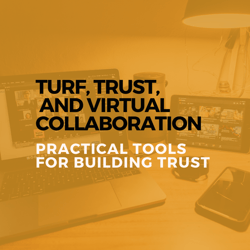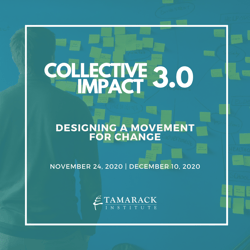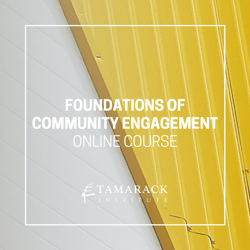Tamarack Institute | October Edition, 2020
Welcome to Engage!
Each month, Engage! features new stories, tools, and resources designed to equip you for community change.
In this edition, we're excited to feature stories and resources that explore Collective Impact, movement building, as well as practical ideas for building community resilience as we think about recovery from COVID.
This month, our banner is made up of an image from one of our Youth Photo Contest winners, Dalton Loveday.
Leadership for Navigating Change
BY: Liz Weaver, Bill Fulton, and Jodi Hardin
 Given the scale of disruptive forces unleashed by the global pandemic, the social movements which inspired action to respond to racial justice and the economic shockwaves that have followed, the need for effective leadership has risen to the forefront in profound ways. Our new paper, Leadership for Navigating Change, draws upon the growing literature around leadership models and applies it to the current context based on what we are observing in communities, states, and provinces across Canada and the United States.
Given the scale of disruptive forces unleashed by the global pandemic, the social movements which inspired action to respond to racial justice and the economic shockwaves that have followed, the need for effective leadership has risen to the forefront in profound ways. Our new paper, Leadership for Navigating Change, draws upon the growing literature around leadership models and applies it to the current context based on what we are observing in communities, states, and provinces across Canada and the United States.
The paper shares our thoughts about responsive, collaborative, and disruptive-emergent leadership, and how we might use this understanding of these leadership forms to ensure we lean into deep, durable and transformative change. Each approach to leadership we describe is necessary, but each is not enough on its own to lead to transformative outcomes. If we don’t embrace more disruptive-emergent leadership, the goal of true equity will not be realized.
For each of the three forms of leadership we describe – responsive, collaborative, disruptive-emergent- we talk about characteristics, strengths and limitations, providing case studies to help visualize what each might look like in action.
We don’t know the length of the race we are running. When the COVID-19 pandemic hit in early March, many of us believed that by summer we would be returning to our old patterns. Now, six months into the pandemic, things continue to shift and churn. This observation about forms of leadership might help each of us better navigate the uncertainty ahead.
Take your learning further:
- Read the paper Leadership for Navigating Change
- Join a free webinar with the authors - Liz Weaver, Bill Fulton, and Jodi Hardin | Leadership for Navigating Change
- Join Liz Weaver for Turf, Trust, and Virtual Collaboration
Share this article:
New Zealand's COVID Miracle
BY: PAUL BORN
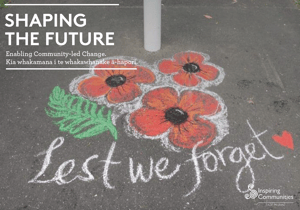 We marvelled as New Zealand eliminated COVID from their island. Much credit was given to their Prime Minister who has led marvellously. But maybe there is more to it. This new booklet explores the nature of citizen and community-led action, and how it contributed to the COVID recovery in New Zealand.
We marvelled as New Zealand eliminated COVID from their island. Much credit was given to their Prime Minister who has led marvellously. But maybe there is more to it. This new booklet explores the nature of citizen and community-led action, and how it contributed to the COVID recovery in New Zealand.
Consider this from the booklets opening, “Thanks to COVID, we have a new reference point for what can be achieved when we all work together– in our communities and as a nation. One of the major lessons from COVID is just how much place matters.
We all live in a place and every place has unique strengths, assets, contexts and wisdom. When we build on these, transformative change becomes possible. Understanding and activating all the resources in our places is key to enhancing social, economic, cultural and environmental wellbeing. COVID-19 has taught us many things. High up on the list is that when it was required, people ran from their silos, stepped up, focused on shared purpose and got ‘#@it’ done. Power was shared because it was the right and necessary thing to do. We all understand a crisis enables this – the opportunity now is to embed these.”
This booklet is filled with stories and lessons that can be applied in any context. If you work in a municipality, are part of a community led organization or a caring citizen you will be riveted by the framing of the ideas and recorded actions.
6 Lessons learned in New Zealand
- Devolve funding and power to hāpu and local communities. Involve hapū and communities in design and local decision-making processes alongside iwi, councils, business, and other key stakeholders. Support tino rangatiratanga and local self-determination.
- Recognize and respect difference. A variety of responses will be needed to serve and support diverse parts of local communities and enable equity. One size solutions do not fit all, and imposing them can undermine local initiatives and marginalize those outside the mainstream.
- Value people and relationships. People, connections and trust make things happen. Build social infrastructure through networks, brokering and weaving roles. Relationship comes before partnership.
- Embed collaboration. Look for further opportunities to work with others, especially across silos. Partnering makes better use of local resources, shares risk and encourages innovation and learning.
- Build local economic resilience and redefine shovel ready. Fund locally led enterprise and action. Support processes and capability building that connects and builds more integrated social and economic capacity.
- Tolerate more risk. Complex challenges require creative responses to see what works. Mandate innovation and learning and provide flexible funding that allows for change and adaptation.
COVID has devastated our communities. People have become very ill and some have died. Children are uncertain about their future and schools have closed. Business have closed and many are not reopening. Communities have experienced disruption to well-being at scale few of us thought possible.
Like New Zealand in the midst of this mass disruption we have also seen resilience. Neighbours reaching out to neighbours. Citizens acting responsibly and safe distancing collectively combating the virus. Our health system acting heroically. New ideas emerging, old ideas challenged.
Our Cities and communities are where people live. It is here where we see the effects of public policy and it is here where the public will address the issues that matter most to Canadians. If we are ever going to significantly recover from COVID in Canada it will happen through citizens working together to achieve a collective community-based response. We were all in this together and it will take all of us in a community to find our way through.
Learn More:
- Read Shaping the Future: Enabling Community-led Change
- Learn more about Inspiring Communities
- Explore How Communities are responding to COVID-19
Share this article:
Collective Impact 3.0 | Evolving the Practice of Large-Scale Change
BY: SYLVIA CHEUY
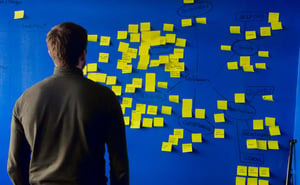
The Collective Impact framework, first outlined by John Kania and Mark Kramer of FSG: Social Impact Consultants, is a proven, high-impact approach for solving complex community challenges. It’s a framework that requires diverse partners to commit to a multi-year plan for tackling issues like poverty, homelessness, food insecurity, and improving high school graduation. One of the biggest drivers of the Collective Impact approach is its emphasis on the importance of involving diverse champions, leaders, community members, and sectors to frame and solve their shared issue. It’s been nearly a decade since the Collective Impact framework debuted and much has been learned from the experiences of the global network of practitioners. How have their experiences deepened our understanding of Collective Impact in action?
In 2016 my colleague Liz Weaver joined evaluation expert Mark Cabaj to write Collective Impact 3.0. This paper represented Liz and Mark’s collective experience of more than a decade of research and practice in the Collective Impact space. CI 3.0 affirmed that the framework of Collective Impact was “roughly right” and went on to propose an evolution to the CI Framework’s five conditions that were rooted the pivotal shift from viewing Collective Impact from a shared management paradigm to viewing it from a movement-building paradigm. This mindset shift can have a dramatic effect.
“In a management approach, the leaders of institutions responsible for a domain – such as health, education, or criminal justice – come together to find ways to get better outcomes than they might achieve independently. While they may consult with the broader community on the nature of the problem and how it might be addressed, they perceive themselves to be primarily responsible for developing and implementing new responses to an issue.”
Moving to a movement-building mindset shifts both the focus and approach when implementing Collective Impact. A movement-building approach to Collective Impact to empower both traditional stakeholders/leaders and ordinary citizens to think and learn together as the work to define and develop strategies to address solve complex issues.
-
Content Experts are professionals, staff in your organization, service providers, and leaders with formal power who have knowledge, tools, and resources to address the issue.
-
Context Experts are people with lived experience of the situation, including children and youth. They are the people who experientially know about the issue and its unique characteristics in their particular place
The lens of movement-building values the context expert, whose day-to-day life is connected to the community, people, and place related the issue. This shift from a focus primarily on the knowledge and wisdom of is both more inclusive, and provides a more complete picture of the complex issue the group is working to address. It also broadens the network of actors who can be mobilized to take action.
The embracing of a movement building approach in the implementation of Collective Impact not only sparks a more complete understanding of a complex issue, it also allows for the generation of a more diverse range of possible solutions. By emphasizing the role of context experts, a Collective Impact initiative's community engagement work focuses beyond encouraging buy-in to cultivating shared ownership for finding – and implementing – new solutions.
If you're looking to change systems and move the needle on big issues, a movement building approach is an important first step. To help equip you to take on this challenge, we're excited to launch our new workshop Collective Impact 3.0 - Designing a Movement for Change. We'll dig into how a movement perspective can accelerate change in your community.
Learn more:
- Join Sylvia Cheuy and Liz Weaver for Collective Impact 3.0 - Designing a Movement for Change
- Read Collective Impact 3.0
Share this article:
BUILDING RESILIENCE IN COMMUNITY (ACROSS HAWAI'I ISLAND)
By: Elle Richards
Read the Blog
FROZEN: ESCAPING THE PARALYSIS OF COVID
By: Liz Weaver
Read the Blog
9 WAYS TO CREATE AN ABCD RECOVERY PLAN
By: Heather Keam
View the Fieldnote
STUCK IN BETWEEN WITH COVID
By: Nicklas Rieck
Read the Blog
HOW TO RECRUIT DIVERSE COMMUNITY GROUPS
By: Lisa Attygalle
Read the Blog
SYSTEMS LEADERSHIP IN ACTION
By: Pamela Teitelbaum
Watch the Webinar
Participatory Evaluation: Community-Based Assessment + Strategic Learning Practices
Virtual Workshop
September 22 | Sold Out - Join the Waitlist
October 20 | Sold Out - Join the Waitlist
Engaging in participatory community-based assessment and strategic learning practices enriches community relationships and strengthens overall ownership and outcomes. This virtual workshop will provide you with a solid overview of the theory, concepts, approach, and practical steps needed for designing and conducting participatory evaluation.
Join Pamela Teitelbaum and Lisa Attygalle and start reflecting on your own evaluation experience and gain an understanding of participatory evaluation approaches, concepts, and steps to strengthen and support how they design and conduct evaluation into their own community-focused work.
Turf, Trust, and Virtual Collaboration
Virtual Workshop
October 29 | Register for the October Workshop
Communities use collaboration to tackle some of their most complex issues, but we often dive into collaboration without truly understanding or embracing the human side of this work. This is even more challenging in a virtual environment. Join Liz Weaver for an online workshop designed to equip you with simple, practical tools and approaches to building trust in a virtual environment, and effectively engaging diverse community partners.
Collective Impact 3.0: Designing a Movement for Change
Virtual Workshop
November 24 | Register for the November Workshop
December 10 | Register for the December Workshop
Join Tamarack’s Sylvia Cheuy and Liz Weaver to learn about the pre-conditions and conditions of Collective Impact through community examples. Dive into Collective Impact 3.0 as a movement building strategy.
Participants will be given tools and frameworks for building commitment and co-creating a compelling, shared strategy for change that can be used in both in-person and virtual environments. Tamarack values small group interaction and workshop environments. We are intentionally limiting each virtual workshop to 50-60 participants to ensure that all participants maximize their learning and connection.
A Professional’s Guide to Working in Citizen Space
Virtual Workshop
December 2 | For organizations working with community
December 3 | For organizations working with youth
Join us for two virtual workshops in December with Cormac Russell who will lead participants through a learning journey to show how, as professionals and organizations, we can shift to citizen-centered community development approaches from top-down institution-centred ones, and how we can challenge the status quo in order to reboot democracy.
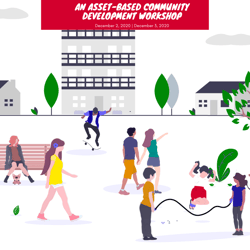
Foundations of Community Engagement
Online Course | Access course materials anytime and learn at your own pace
Join Tamarack's Lisa Attygalle, Director of Community Engagement, in this new online course designed to build a foundation of knowledge and practice for your community engagement work.
Through video lessons, case studies, readings, and activities, you'll dig into the role of community, who should be engaged, community engagement techniques, how to overcome challenges, and how to evaluate your engagement activities.
This course is available to use at your own pace, but you'll be learning alongside a diverse group of Tamarack Institute learners. Engage in comments and questions on the online platform, and join Lisa for monthly small group coaching to get more personalized feedback and insight.
Leadership for Navigating Change
Date: October 13, 2020
Speakers: Bill Fulton, Jodi Hardin, and Liz Weaver
Date: October 14, 2020
Speakers: Catherine Abreu, Natalie Appleyard and Maya Menezes
People, Practice, and Transformational Change
Date: October 21, 2020
Speakers: John Kania and Liz Weaver
Meaningfully Engaging Youth in Evaluation
Date: October 28, 2020
Speakers: Corliss Bean, Marika Warner, Bryan Heal & Pamela Teitelbaum
From ‘For’ People to ‘With’ People; Creating Equitable and Resilient Places
Date: November 25, 2020
Speakers: Afsaneh Tafazzoli, Marveh Farhoodi, Shanna-Kay Smith & Negar Hashemi


